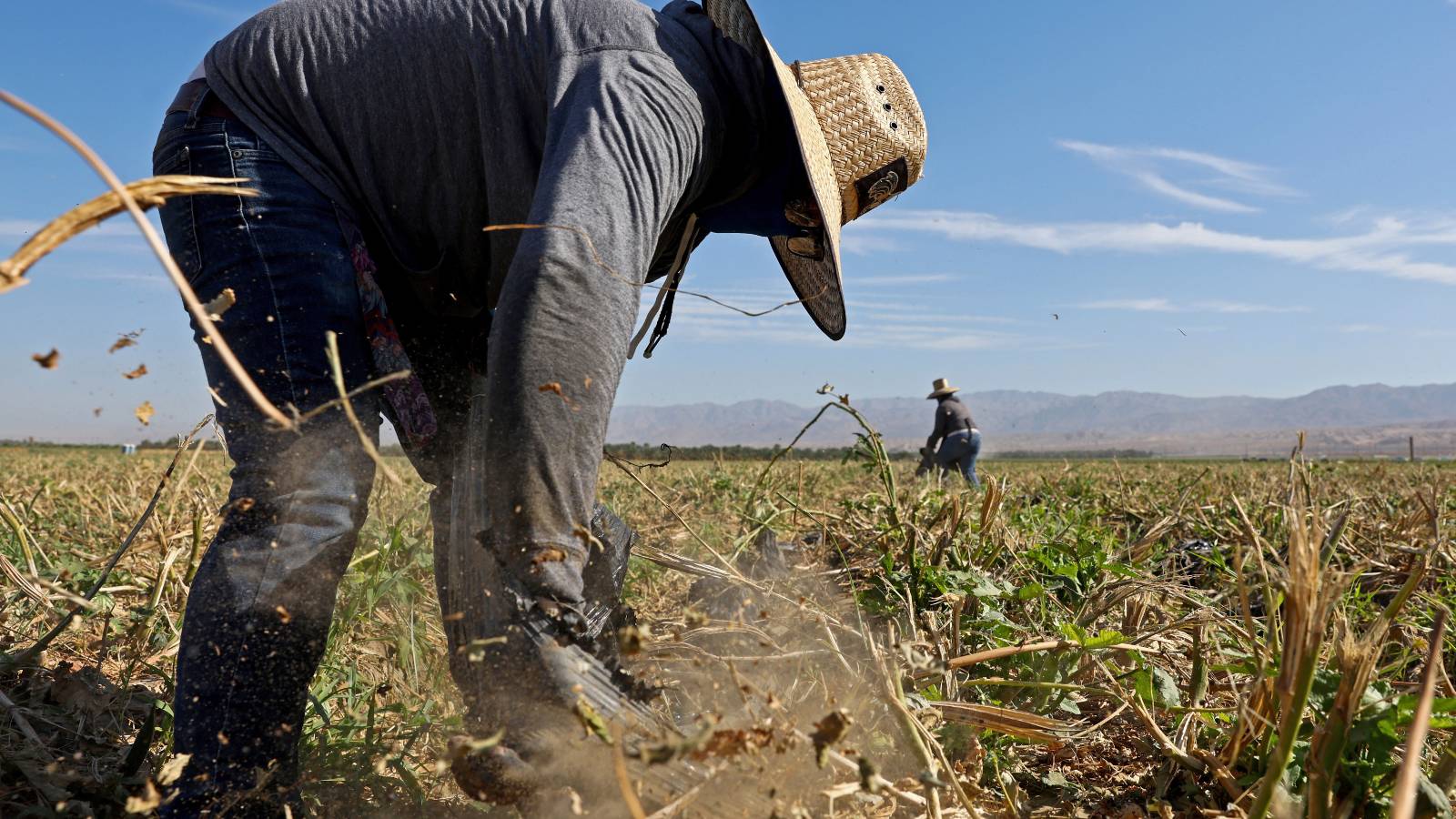Mass shootings at two California mushroom farms last month drew national attention to the dismal working and living conditions imposed on California farmworkers. Surveys of California Terra Garden and Concord Farms, where the assailant had worked, revealed families living in trailers and shipping containers, using makeshift kitchens and portable toilets. State and federal officials have opened investigations into the farms, where workers reported earning below minimum wage.
The conditions are “very typical images … for California and for the country,” Irene de Barraicua, director of operations at Lideres Campesinas, a network of female farmworker leaders, told the Washington Post after the shooting.
Now, the first comprehensive assessment of California farmworker health since 1999, released Friday, demonstrates just how typical those conditions are – and how climate change, and widening inequality, are exacerbating challenges for these workers, some of the most disenfranchised residents of the state.
The landmark study, by the University of California, Merced’s Community and Labor Center, in partnership with organizations that serve farmworkers across the state, and funded by the California Department of Public Health, surveyed over 1,200 workers about their health, well-being, and workplace conditions. It found widespread exposure to wildfire smoke and pesticides, rodents and cockroaches in rental units, inadequate safety training, and lack of access to clean drinking water. Half of all farmworkers surveyed reported going without health insurance, even when between one-third and one-half had at least one chronic health condition.
“Even through these major climate disasters the food supply has not been interrupted,” said Edward Flores, a professor of sociology at UC Merced and one of the report’s authors. “But the conditions that people work in have become riskier to their well-being. And they have fewer resources with which to weather a major event.”
Temperatures can already exceed 110 degrees Fahrenheit in areas including the San Joaquin Valley, Imperial Valley, Coachella Valley, and Sacramento Valley, where much of the state’s farming happens, and the heat is only getting worse. Meanwhile, intense precipitation events cause damage to substandard rental units, and extreme fire weather days, which have doubled since the 1980s, increase the risk of respiratory illness.
More than one in three survey respondents, 92 percent of whom were renters, experienced problems keeping a house cool or warm. And about 15 percent encountered rotting wood, water damage, and leaks.
California’s Division of Occupational Health and Safety, or Cal/OSHA, has various standards in place to protect workers from extreme weather and other occupational hazards. For outdoor workers, for example, employers have to provide fresh water, access to shade, and cool-down rest breaks at 80 degrees Fahrenheit. They also have to train employees and supervisors on the signs of heat illness and maintain a heat illness prevention plan, with written procedures for what to do in case of an emergency.
These standards are some of the strongest in the nation. Still, they often don’t protect farmworkers, who report widespread violations and non-compliance. Almost half the farmworkers surveyed had never been provided with a heat illness prevention plan. And 15 percent received no heat illness training at all.
During wildfire season, 13 percent had to work when smoke made it difficult to breathe, often without respiratory protective equipment as required by Cal/OSHA. While state law also requires pesticide safety training to be provided in a language that farmworkers understand, about half who had worked with the chemicals in the past year did so without receiving adequate training.
Even more concerning, when workplaces were out of compliance with labor laws, 36 percent of farmworkers said they would not be willing to file a complaint. Most of the time, that was for fear of employer retaliation. The fact that only 41 percent of the respondents had access to unemployment insurance suggests that 59 percent weren’t documented, said Edward Flores. “A very vulnerable person has to take the job that’s available to them, even if it’s not up to code.”
As climate change intensifies, challenges facing farmworkers, and especially undocumented workers, will only increase, the report warns. “Whether it’s record heat, catastrophic wildfires, or major floods, farmworkers either have to work in dangerous conditions or they’re unable to work,” said Flores. “They don’t have the same access to a safety net.”
The researchers hope that as California invests in reducing its emissions and helping agriculture adapt to a warming world, the data from the report will lead to more integrated climate, economic, and labor policy. “We should be thinking about a cohesive strategy so that, for example, investment in technology to improve the way that crops are produced might also be done with farmer organizations at the table, with input from health and safety advocates,” said Flores.




